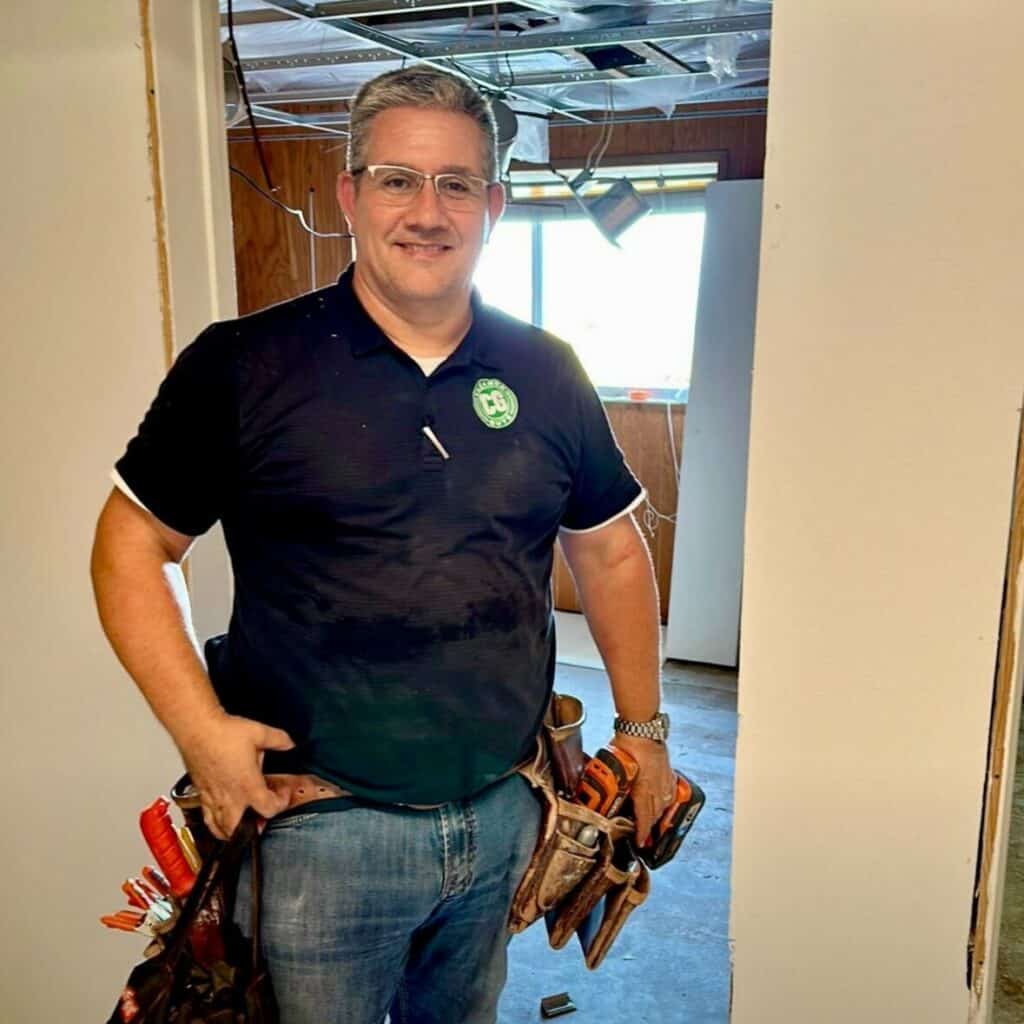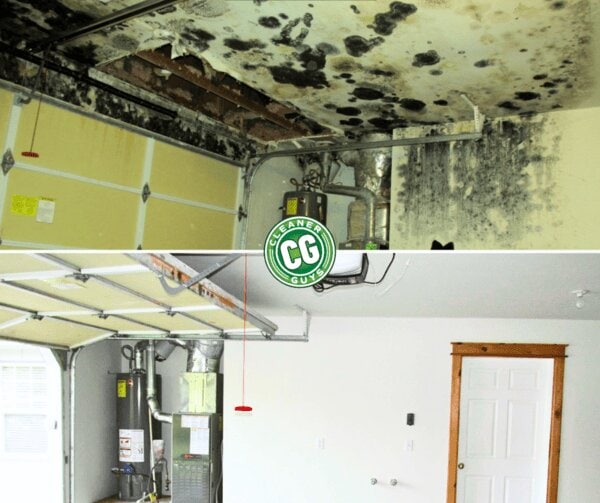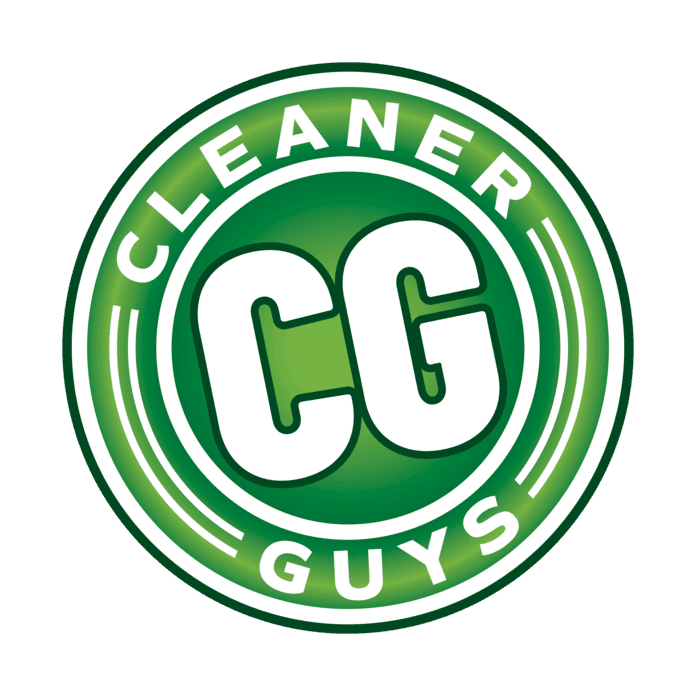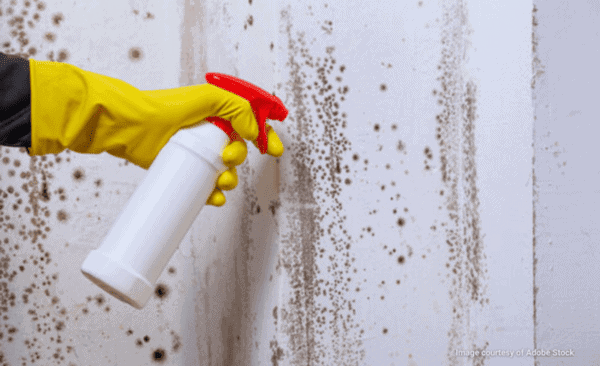Everyone on the internet always seem to have a myriad of conflicting opinions, don’t they? This seems to be especially true of DIY cleaning solutions. For every blogger who swears by one cleaning solution, there’s another who denounces it as useless. So when it comes to the question of “Does bleach kill mold”, how are you supposed to know the truth?
Often, the best choice is to trust the real experts. That’s why this ultimate guide to bleach and mold is written by real mold experts: the Cleaner Guys team. Get your answers about how to clean mold from professionals — not Reddit.
Table of Contents
- The Short Answer
- Why We Don’t Recommend Bleach for Mold Cleaning
- What Kills Mold Better, Bleach or Vinegar?
- What Kills Mold Permanently?
- What to Do When You Find Mold
- How to Prevent Mold in the Future
- Conclusion
The Short Answer: Does Bleach Kill Mold?
Does bleach kill mold? Yes, bleach does technically kill mold, but it doesn’t kill it entirely, and it tends to cause more harm than good. Many people are fooled into thinking that bleach completely kills mold, because it often looks like it does. But is the mold really gone?
Why We Don’t Recommend Bleach for Mold Cleaning
There are several issues with using bleach as a mold cleaner that most people aren’t aware of. I spoke with Bob Shupe, one of the owners of Cleaner Guys and our resident mold expert, about why using bleach on mold is a bad idea.

It’s Not Thorough and It Can Cause Damage
When asked about bleach, Bob emphatically stated, “We never use regular bleach to clean mold, because it causes more harm than good. It damages and stains the surfaces you use it on, and it doesn’t even truly kill the mold, because it only penetrates the surface.”
This is the trouble with mold: it tends to root deeply into whatever material it grows on, and bleach can’t penetrate deeply enough to kill it all. And if you don’t kill fungi or plants down to the root, they will almost certainly grow back again. Furthermore, as Bob pointed out, bleach is so caustic, it usually causes staining or other kinds of damage to porous surfaces like drywall, which takes more work to fix.
It Introduces More Moisture That May Make the Mold Worse
Bob also pointed out, “Another problem with using bleach on mold is that bleach is a water-based product. After application, the pH will eventually neutralize, leaving behind nothing but more moisture, which is how mold grows in the first place.” Mold requires moisture to grow, so providing more of it is not ideal. In fact, it can make the mold worse over time, instead of better!
It’s Risky to Use
Yet another reason not to try cleaning mold with bleach is that bleach is not healthy or safe to breath in or touch. Now, measures can be taken to work with it effectively, such as opening windows for ventilation and wearing PPE. But given that we’ve already explained why it’s not effective against mold, there’s no reason to even try to use it. Even the EPA discourages the use of bleach for mold.
What Kills Mold Better, Bleach or Vinegar?
Both bleach and vinegar can kill mold on the surface, but neither is the right product to use for killing 100% of your mold, down to the root. Our mold expert Bob explains why. “Using either vinegar or bleach to clean mold is the same principle: high pH. They’re both acidic enough to kill some plant matter. The difference is that vinegar is ‘natural’, and bleach is man-made. The problem with both is that they don’t penetrate deep enough to truly kill mold.”
Learn more about using vinegar to kill mold — and the one instance when it is the best method — by clicking here.

What Kills Mold Permanently?
The only completely foolproof method of getting rid of mold is 1. Stopping the source of moisture, and 2. Complete removal. Some products may be helpful for very small areas of mold growth, but most of the time, mold growth spreads too far and too quickly for products alone to be effective.
Stopping the source of the moisture is our number one recommended course of action because without this step, your mold will come back again. Mold requires moisture to grow, so if you have mold, it’s because there is moisture somewhere, such as a leak, condensation, or some form of water damage. The only way to ensure the mold will not return is to find and cut off that source of moisture. I you cannot find it on your own, we advise you to hire a mold inspection company. They can determine the source of moisture with their professional equipment and training.
We also find in our mold remediation practice that unless the moldy area is less than 1 square foot, removing the damaged material is almost always necessary. As Bob pointed out, mold roots deep, and so we always say to our clients, “However much mold you can see, there’s almost certainly a lot more you can’t see.” Removing the drywall (or whatever material the mold is on) is usually the only way to discover the full extent of the damage.
The Product That Can Work
If your mold is only a tiny spot, it may not have spread far, in which case a product may be enough to do the job. However, we don’t recommend trying to get rid of a small area of mold with either bleach or vinegar, as they’re not thorough enough.
We recommend a fungicide, a chemical specifically formulated to kill mold down to the root. Fungicides still may not be 100% effective if the area of mold is larger than 1 square foot, since the mold has probably spread and rooted too far, where you can’t see. However, on a small area, it may be effective. We recommend Fiberlock Shockwave, the fungicide we use in our own professional mold removal practice. We are in no way affiliated with or sponsored by Fiberlock; we just love their product.
What to Do When You Find Mold
The EPA recommends calling a professional mold removal company if the mold you find covers more than 10 square feet of surface. However, as I’ve already said, we professionally disagree. We deal with a lot of homeowners who tried to clean an area of mold bigger than a square foot with vinegar, bleach, or other topical products. In our experience, it usually comes back, because those remedies don’t penetrate deeply enough to completely kill 100% of a large area of mold.
Our professional recommendation is that you call a mold removal company if the mold covers more than about 1 square foot of space. Mold roots deeply into whatever surface it’s on, which is why we always say: however much mold you can see, there’s almost certainly a lot more you can’t see.
Again, the most effective method to completely, 100% remove all mold is to remove the material it’s growing on. You simply can’t be certain it’s all gone otherwise. This requires the expertise of a mold remediation company, and should not be attempted by a layperson.
Unsure how to find a mold remediation company you can trust? Read our guide to finding a trustworthy service company next!
How to Prevent Mold in the Future
- Keep Indoor Humidity Low. We agree with the CDC’s recommendation to keep your indoor humidity ideally lower than 50%, either through ventilation or a dehumidifier. Remember: mold needs moisture to grow, so don’t give it any!
- Take Care of Leaks Immediately. If you live in a rental home or apartment, alert your landlord about leaks and damaged window sealings immediately, pressing them about it as necessary. If you own your home or business, it’s up to you to stay on top of any plumbing issues and leaks.
- Ventilation, ventilation, ventilation! Try to have some kind of airflow in every room. Ceiling fans, freestanding fans, and even opening a window will do. Stagnant air encourages mold growth.
- Regular Cleaning. Mold feeds on organic materials like dust and crumbs. Cleaning all those away makes your home more inhospitable to mold.
Conclusion
So, does bleach kill mold effectively? Is it a good solution? Our professional answer is no. It may look on the surface like bleach kills mold, but only on the surface. It doesn’t penetrate deeply enough to kill deeply rooted, widespread mold. Furthermore, it’s caustic enough to damage any porous material you use it on, like drywall, and it’s risky to use.
For areas smaller than 1 square foot, a fungicide like Fiberlock Shockwave may be able to kill all the mold. But for anything larger than this tiny area, we strongly advise you to hire a mold remediation company. Mold removal should not be attempted by a layperson.
If you happen to need mold removal in Western Washington State, we also highly encourage you to talk to Cleaner Guys about it! Cleaner Guys is the only mold remediation company in the area that boasts award-winning customer service, and we pride ourselves on our honest prices and our high standards of workmanship. Give us a call today with the number in the menu at the top of your screen, or contact us on our contact page!
Disclaimer: This article is for informational purposes only. No part of this article is medical or legal advice, and may not be used as such. For all serious medical matters, consult your doctor. For all serious legal matters, consult your legal advisor. This article contains Cleaner Guys’ experience and opinions only.


